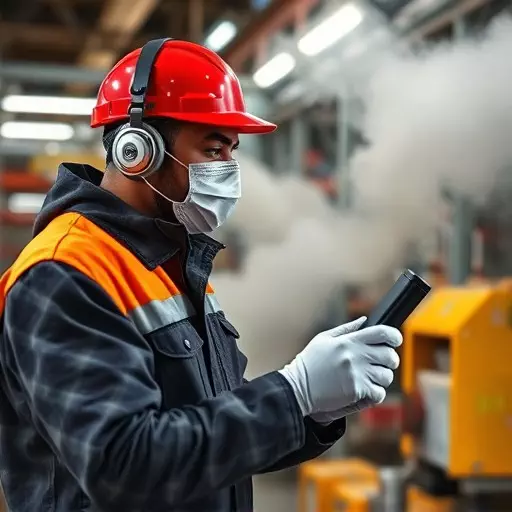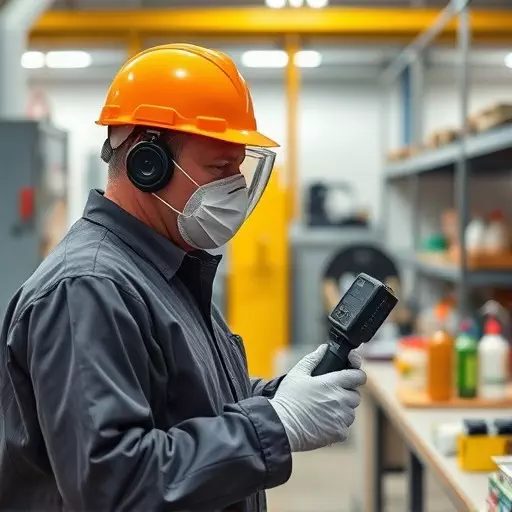Employee exposure monitoring, powered by advanced digital tools, is transforming workplace safety. By continuously tracking airborne contaminants like VOCs and particulate matter through real-time data, organizations can proactively mitigate risks, enhance air quality, and comply with regulations. Integrating these solutions into safety protocols, alongside workplace air quality testing and hazardous substance monitoring, enables employers to create healthier work environments, reduce employee exposure, and foster a culture of proactive safety management. Leveraging AI and IoT, the future of workplace safety promises continuous improvement and safer conditions for all employees.
In today’s digital era, workplace safety is more crucial than ever. Leveraging advanced tools and technologies, organizations can significantly enhance their safety programs. This article explores essential digital solutions designed to protect employees and ensure compliance. From understanding employee exposure monitoring techniques to the role of technology in workplace air quality testing and hazardous substance monitoring systems, we delve into innovative approaches that streamline safety processes and foster a culture of continuous improvement.
- Understanding Employee Exposure Monitoring: Tools and Techniques to Ensure Safety
- The Role of Technology in Workplace Air Quality Testing: Enhancing Health and Compliance
- Hazardous Substance Monitoring Systems: Digital Solutions for Effective Risk Mitigation
- Integrating Data: Streamlining Safety Processes with Advanced Software Platforms
- Future Trends: AI, IoT, and Their Impact on Continuous Workplace Safety Improvement
Understanding Employee Exposure Monitoring: Tools and Techniques to Ensure Safety
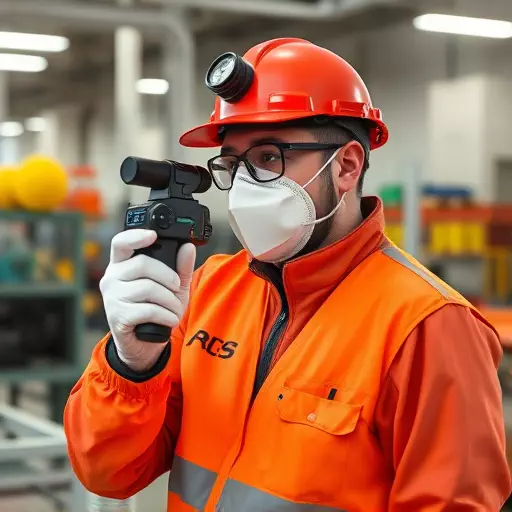
Employee exposure monitoring is a critical aspect of ensuring workplace safety, especially when dealing with hazardous substances. It involves the use of specialized tools and techniques to measure and assess employees’ potential risks in real-time. These methods go beyond traditional workplace air quality testing by providing dynamic data that helps identify sources of exposure and implement targeted mitigation strategies.
Advanced digital tools enable continuous monitoring of airborne contaminants, including volatile organic compounds (VOCs) and particulate matter, which are common in various industrial settings. Sensor technology and connected devices can detect even trace amounts of hazardous substances, allowing for immediate action to protect workers. By integrating these solutions into existing safety protocols, organizations can enhance their ability to maintain a safe working environment, reduce health risks, and foster a culture of proactive safety management.
The Role of Technology in Workplace Air Quality Testing: Enhancing Health and Compliance
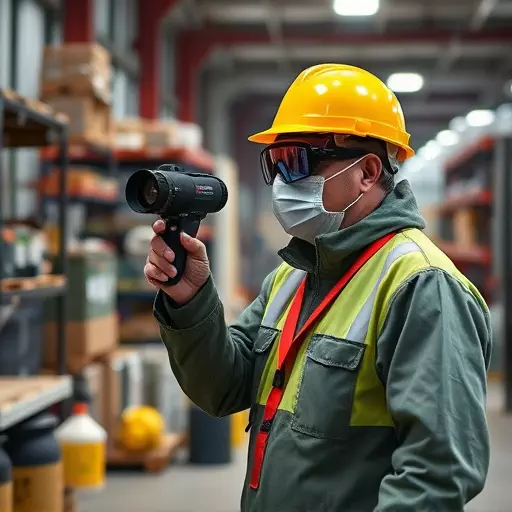
In today’s digital era, technology plays a pivotal role in enhancing workplace safety, particularly in the realm of air quality testing. Employee exposure monitoring is a game-changer, enabling employers to track and mitigate risks associated with hazardous substances. Advanced sensors and connected devices are now used for real-time data collection, providing insights into air composition and potential hazards. This innovative approach ensures compliance with health and safety regulations by allowing for immediate corrective actions when necessary.
Workplace air quality testing has become more accessible and efficient through digital tools. These technologies facilitate the identification of harmful substances, such as volatile organic compounds (VOCs) or particulate matter, which may go unnoticed without proper monitoring. By continuously evaluating indoor air quality, organizations can create healthier work environments, reduce employee exposure to dangerous materials, and ultimately foster a safer atmosphere for all workers.
Hazardous Substance Monitoring Systems: Digital Solutions for Effective Risk Mitigation
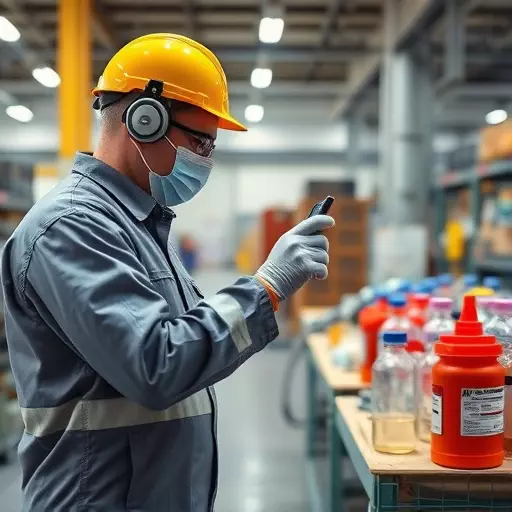
In today’s digital era, hazardous substance monitoring systems have evolved significantly, offering efficient solutions to mitigate risks associated with employee exposure. These advanced tools play a pivotal role in ensuring workplace air quality testing by providing real-time data on potentially dangerous substances present in the environment. With continuous monitoring, employers can promptly identify and address any anomalies or unsafe conditions.
Digital platforms equipped with sensors and intelligent algorithms can detect various hazardous materials, from toxic chemicals to volatile organic compounds. This enables companies to implement effective control measures and maintain a safe atmosphere for their workforce. By integrating these systems into existing safety protocols, organizations can streamline their efforts in managing risks, enhancing overall workplace safety, and promoting a healthier environment for employees.
Integrating Data: Streamlining Safety Processes with Advanced Software Platforms

In today’s digital era, integrating data has become a game-changer in enhancing workplace safety. Advanced software platforms are revolutionizing how organizations manage and monitor employee exposure to various hazards. These platforms streamline safety processes by centralizing critical information, from real-time air quality testing data to detailed records of hazardous substance monitoring. With such tools, companies can quickly identify potential risks, track exposure levels, and ensure compliance with safety regulations.
Employee exposure monitoring is made more efficient through digital solutions that provide comprehensive insights. For instance, wearable sensors and connected devices offer continuous tracking of air quality and hazardous substances in the workplace. This data is then seamlessly integrated into centralized software systems, enabling managers to make informed decisions promptly. Such integration not only improves safety but also fosters a culture of proactive risk management.
Future Trends: AI, IoT, and Their Impact on Continuous Workplace Safety Improvement
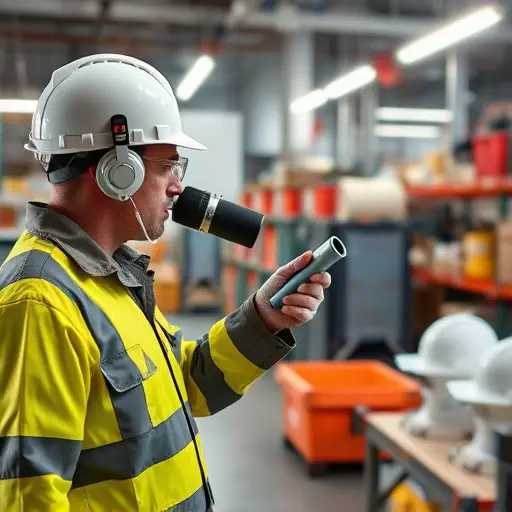
The future of workplace safety is closely tied to advancements in Artificial Intelligence (AI) and the Internet of Things (IoT). These technologies offer unprecedented opportunities for continuous improvement, enabling employers to proactively manage risks rather than merely reacting to incidents. AI-powered tools can analyze vast datasets to predict potential hazards, such as workplace air quality issues or employee exposure to hazardous substances. By integrating IoT sensors into the workplace, real-time monitoring becomes possible, providing instant alerts when parameters deviate from safe levels.
For instance, smart sensors can detect and measure air quality, volatile organic compounds (VOCs), and other airborne contaminants, ensuring adherence to occupational health standards. Similarly, AI algorithms can track employee movements and activities, identifying high-risk zones and tasks, and suggesting targeted safety interventions. This proactive approach to workplace safety has the potential to revolutionize industry practices, fostering a safer and healthier work environment.

